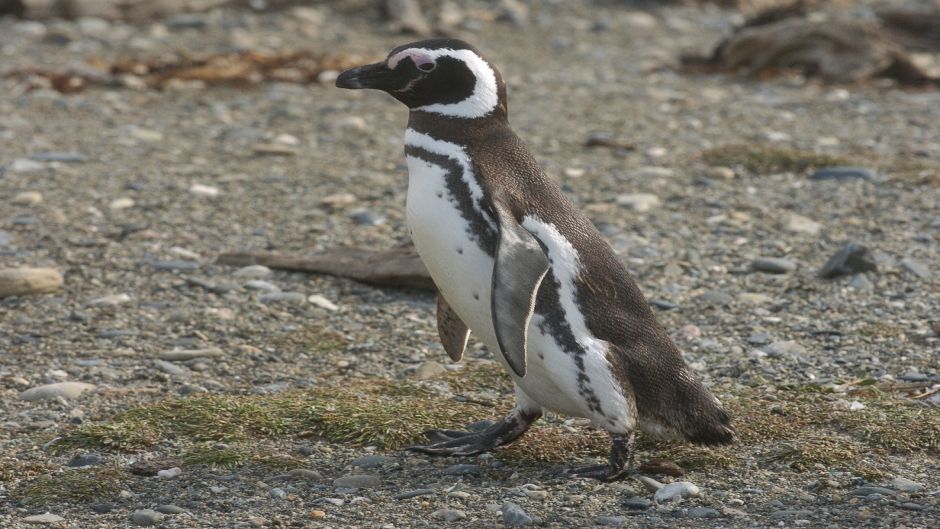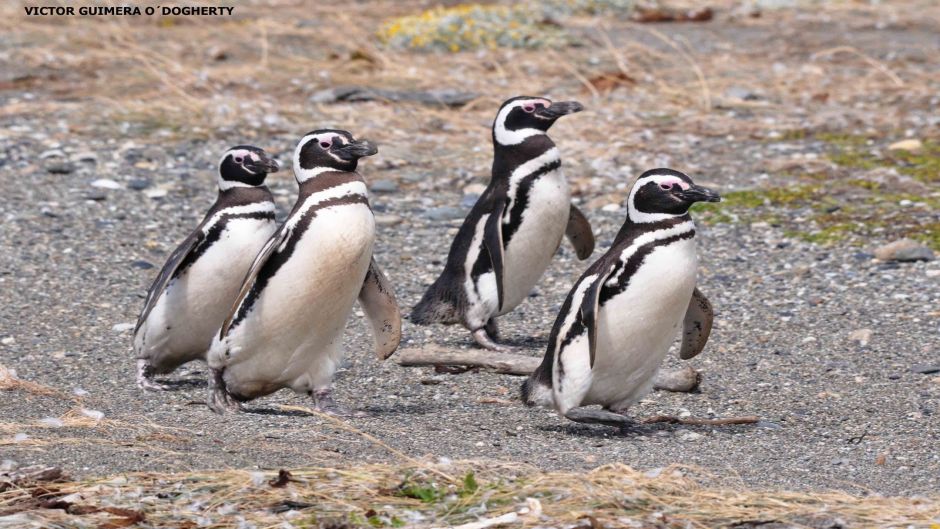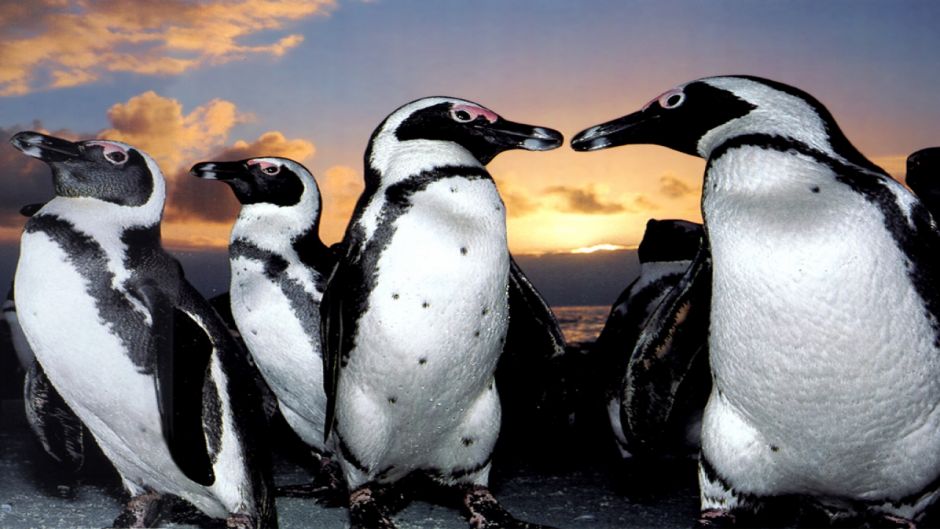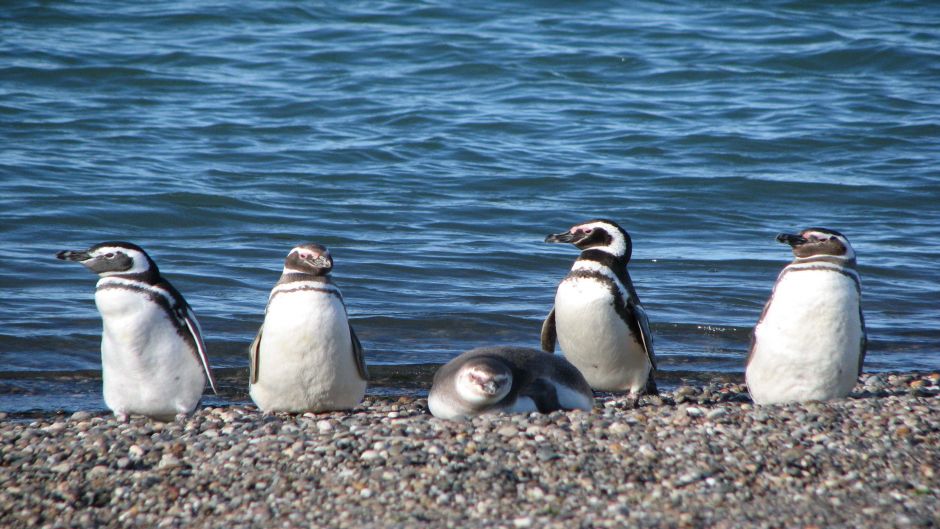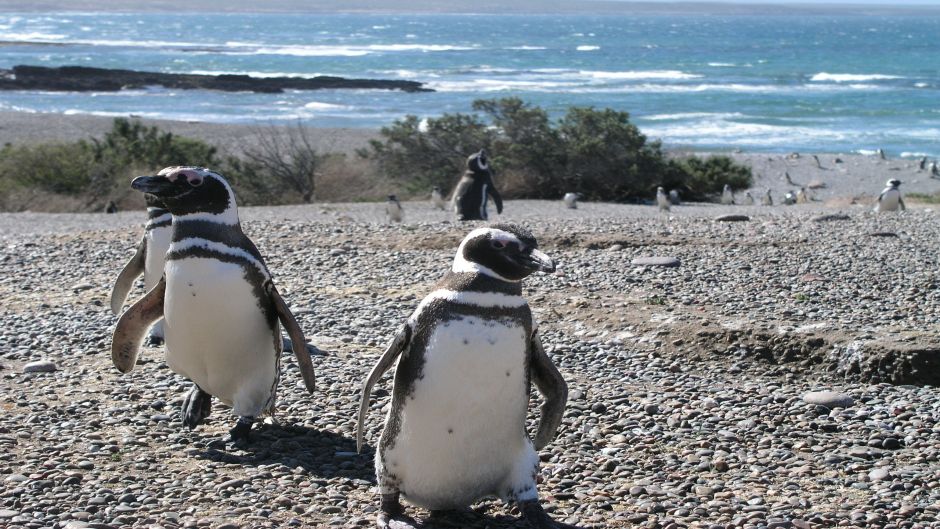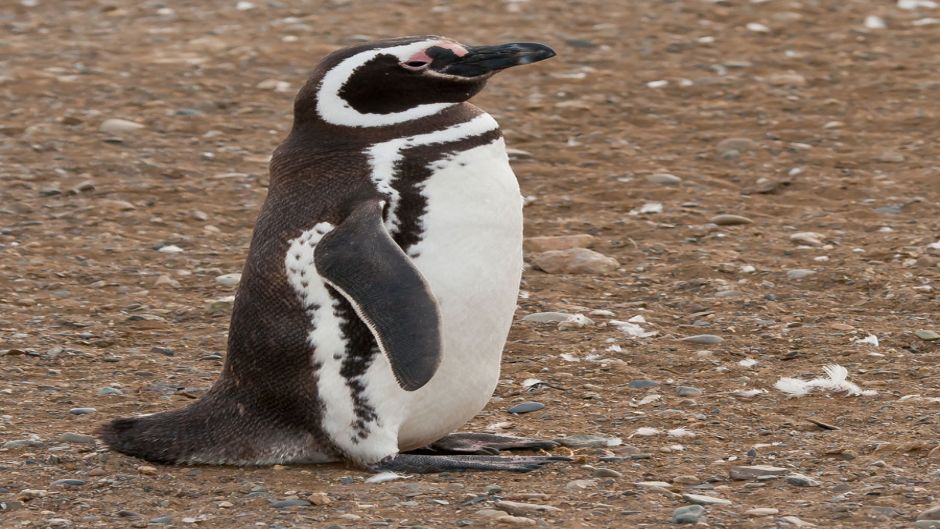Magellanic penguin, Guia de Fauna. RutaChile
Familia:
Spheniscidae Genero:
Spheniscus Nombre Cientifico: magellanicus
Magellanic Penguin, commonly called Magellanic penguin or Patagonian penguin is a species of bird in the family of penguins (Spheniscidae), which nests in the Falkland Islands and the coasts and islands of Patagonia in Argentina and Chile, migrating the north in the winter, reaching the waters of Uruguay and southeastern Brazil with warmer temperatures, being a wandering species in Australia, Peru, and other South Atlantic islands. It is the largest of the genus Spheniscus. The other species of this genus are the African Penguin, the Humboldt Penguin and the Galápagos Penguin.
Discovery:
Although the Indians already knew the Penguins, it was the January 27, 1520 when there was possibly the first vision and detailed description of the penguins by Antonio Pigafetta, the expedition crew of Ferdinand Magellan. He described a "strange geese" swimming alongside his ship. Francisco Balbo, another crew member, added abundant geographic information to determine which were in areas close to Punta Tombo. This region of Patagonia, in the province of Chubut, is the usual refuge of thousands of Magellanic penguins gather to breed.
Characteristics:
Magellanic penguins are medium in size, with copies of between 35 and 45 centimeters high (3 Kg of weight). The head is black with white stripe of the eye, around the ears and chin, to join in the throat. They have black plumage gray on the back and white on the front, with two black bands between head and torso, the lower inverted horseshoe shaped. These two bands distinguish, for example, the Humboldt penguin, which has only 1.6
The colors of its plumage represent an evolutionary adaptation by the animal can get in an efficient mimicry, since when nothing submerged marine environment, its dark back lost on those who observe from above, to be confused with the dark tones of the deep marinas, and -a reverse - his white torso is mixed with the brightness of the surface to the observer from a greater depth.
Keeping warm:
Like other animals in cold climates, the penguin has a fit to minimize the loss of body heat morphology. Its compact body, and the thick layer of fat that surrounds the most compact plumage together to preserve it. The animal also has a uropigia gland at the base of the tail, which secretes a waterproof lubricating oil with feathers by the peak. Additionally, the distribution of blood vessels allows a very accurate regulation of heat, minimizing the energy expenditure of the body.
Reproduction:
Features clutch caves in the Patagonian coast.
They nest in colonies in some places along the coast, so selecting such soft soil where they can dig their nests, but they can also nest under bushes or other protection. The rookeries are used year after year, and the animals to get elected and reconditioned pre existing caves for the new start. While prefer suitable land near the sea, they found nests up to one kilometer from the coast.
The arrival of the birds occurs in September to prepare the nests and make the start apareamiento.La takes place in October and is usually of two eggs. Gestation lasts 42 days, during which both parents take turns brooding and go to feed the sea. The chicks have a uniform dirty gray down, and for the month of February are practically self-sufficient. In April the migration starts to Brazilian seas, where they return to the six months to restart the cycle.
Predators:
The most important Magellanic penguin predators are the leopard seal, giant petrel and the killer whale. Eggs and chicks are predated by several species of birds such as the brown skua gull or the cook seagull, the Southern seagull and the Antarctic pigeon. Also land animals like the red fox, armadillos and skunks advantage distracting parents to take eggs or defenseless young.
Before his character established protected fauna, penguins were easy prey for hunters and animal fat oil, but its comparatively small size made it less attractive than other marine life equally unguarded austral land as sea lions. It was also massively slaughtered them until well into the twentieth century, even as late as unreasonable serve as fuel in the boilers of steamships.
Human activity also produces indirectly annual deaths of many penguins, either by overfishing of species with which it feeds, and oil spills affecting him mortally with the rest of the birds.
Countries where lives Pinguino de Magallanes
ARGENTINA
AUSTRALIA
BRASIL
CHILE
PERU
